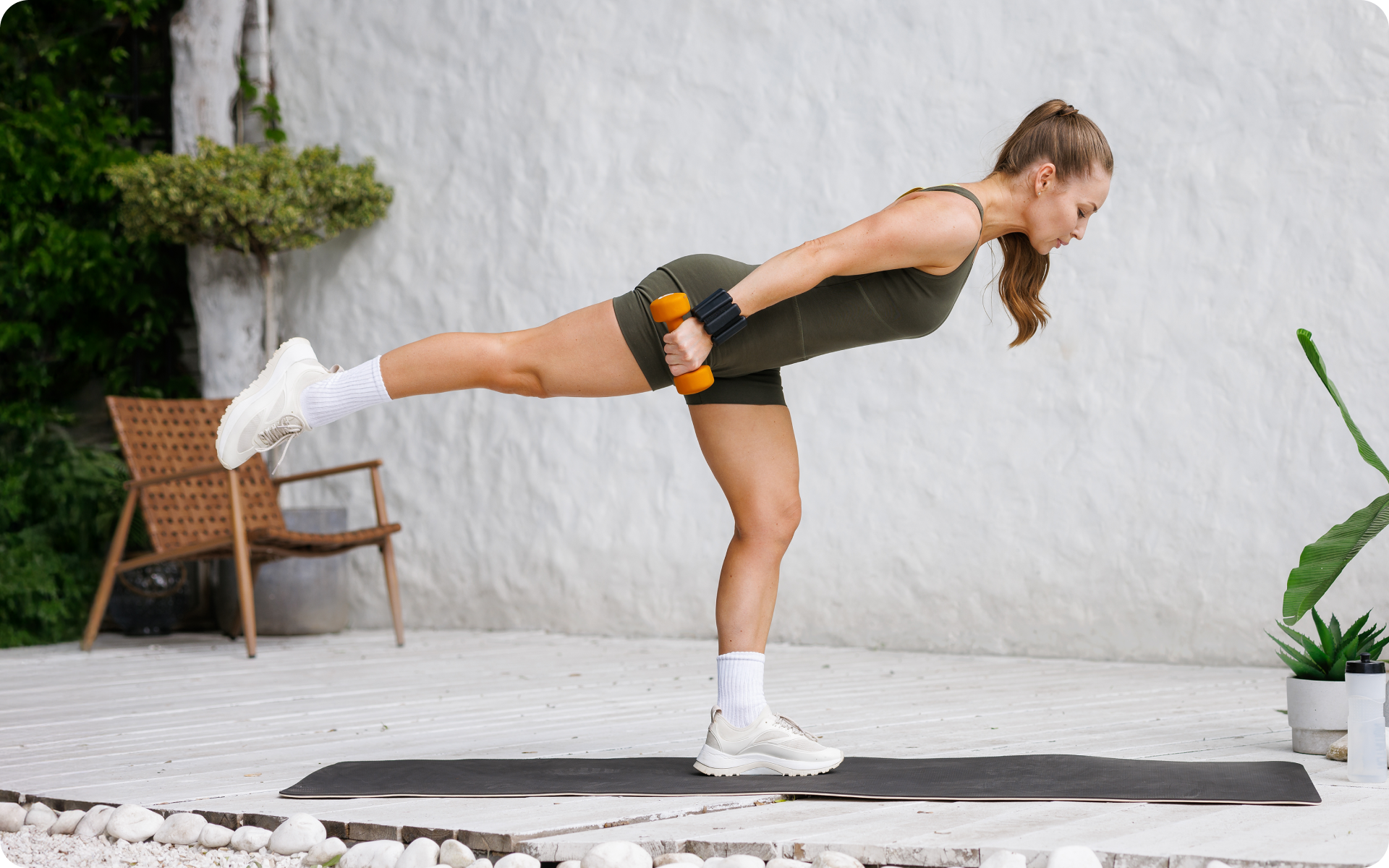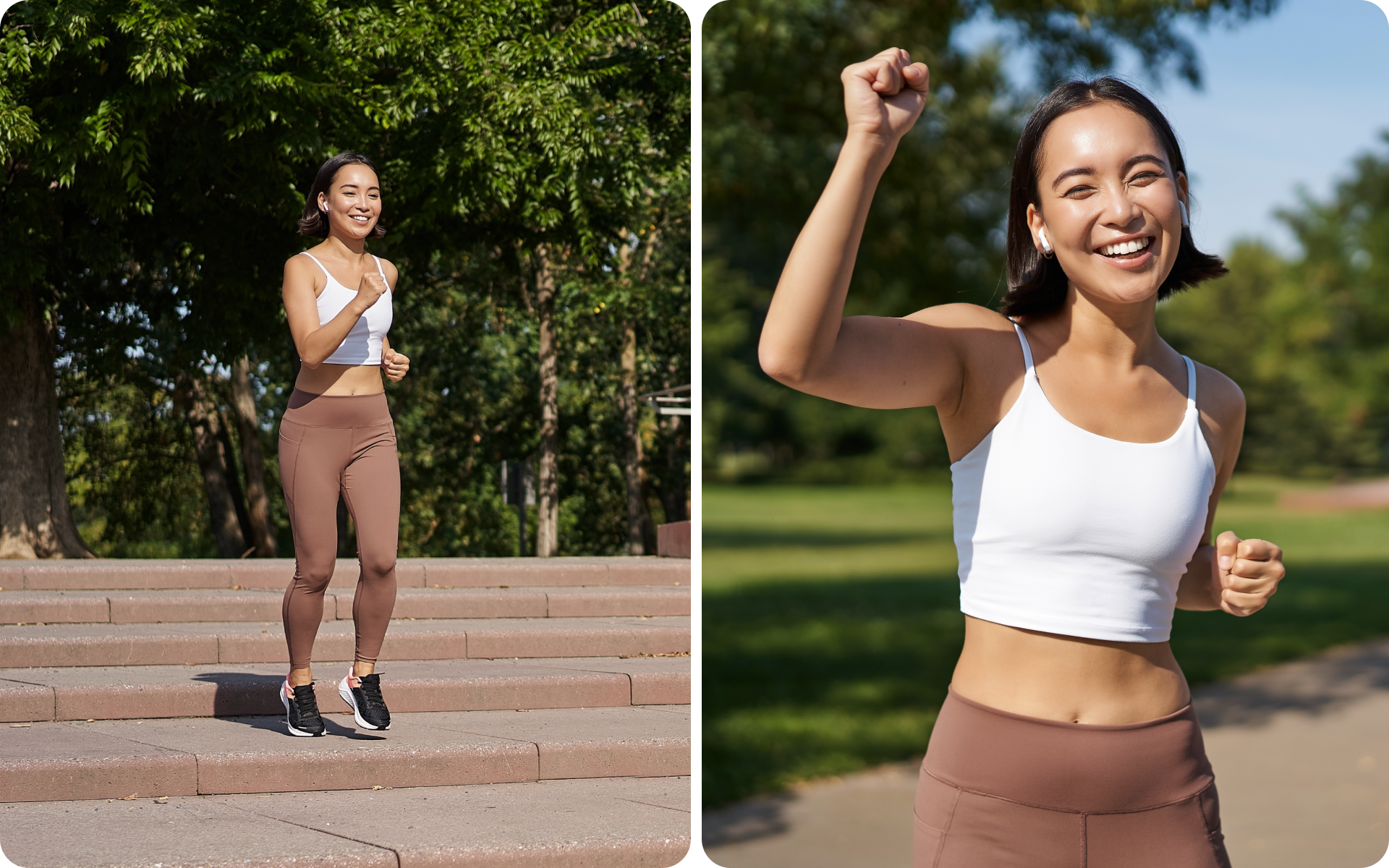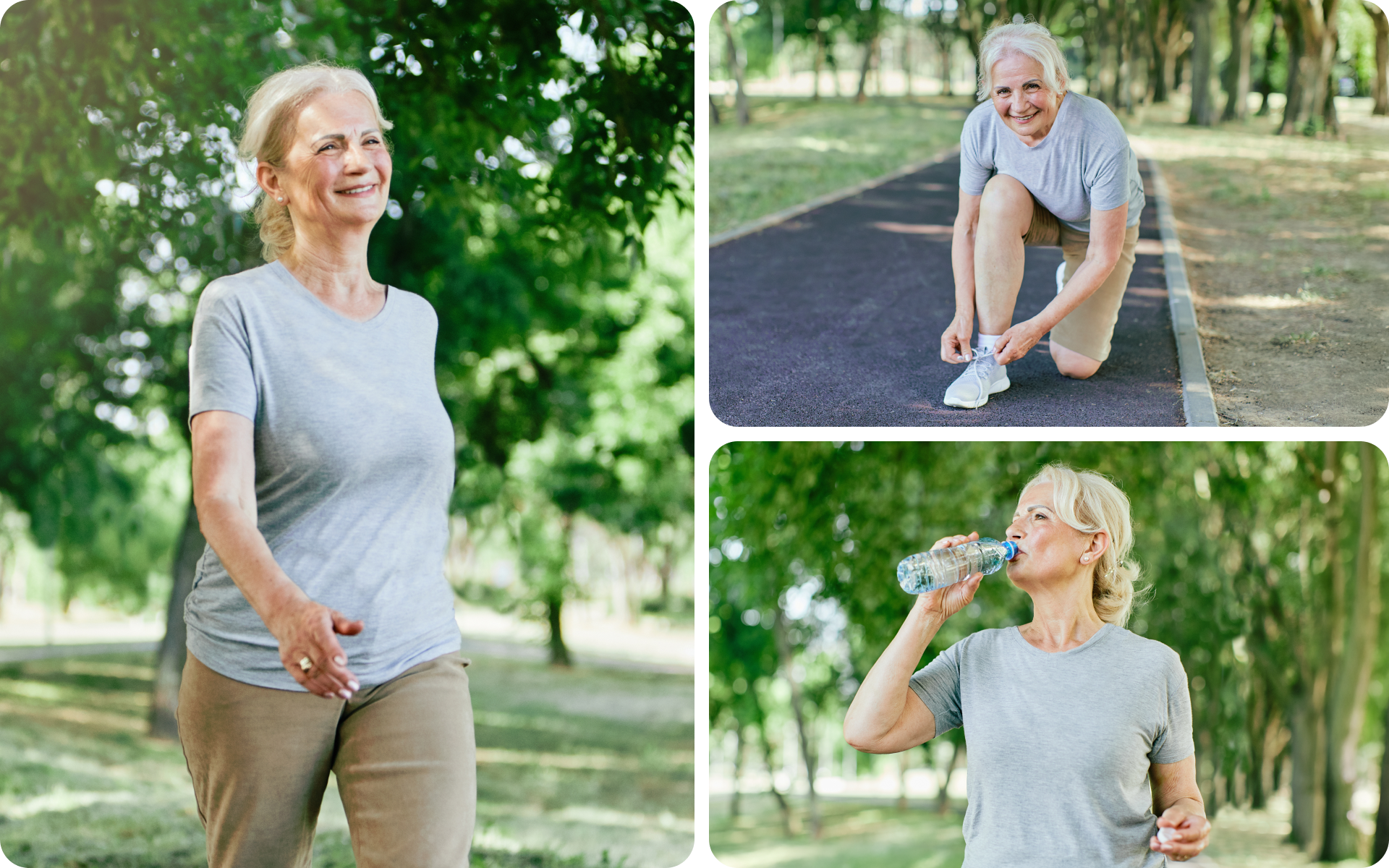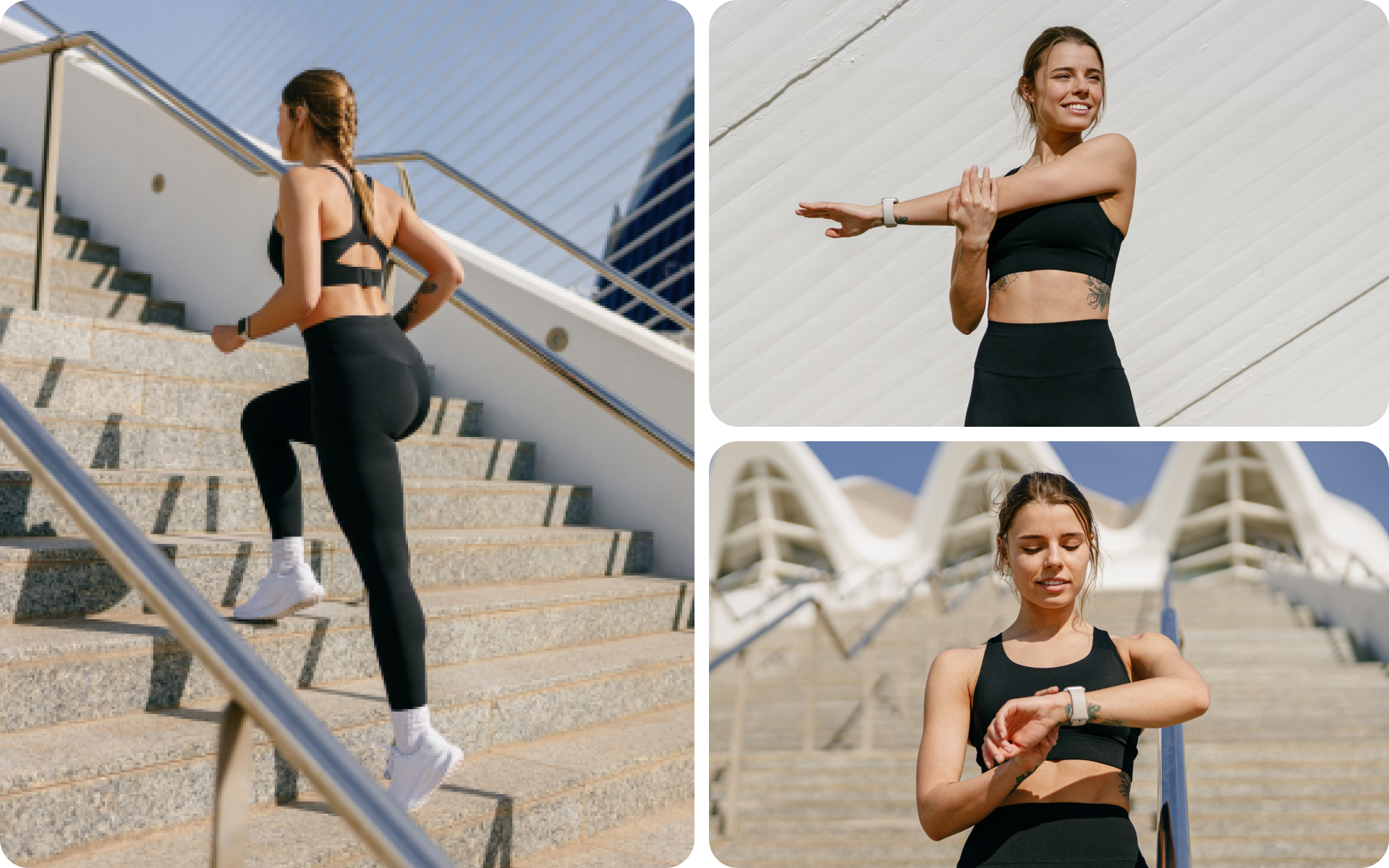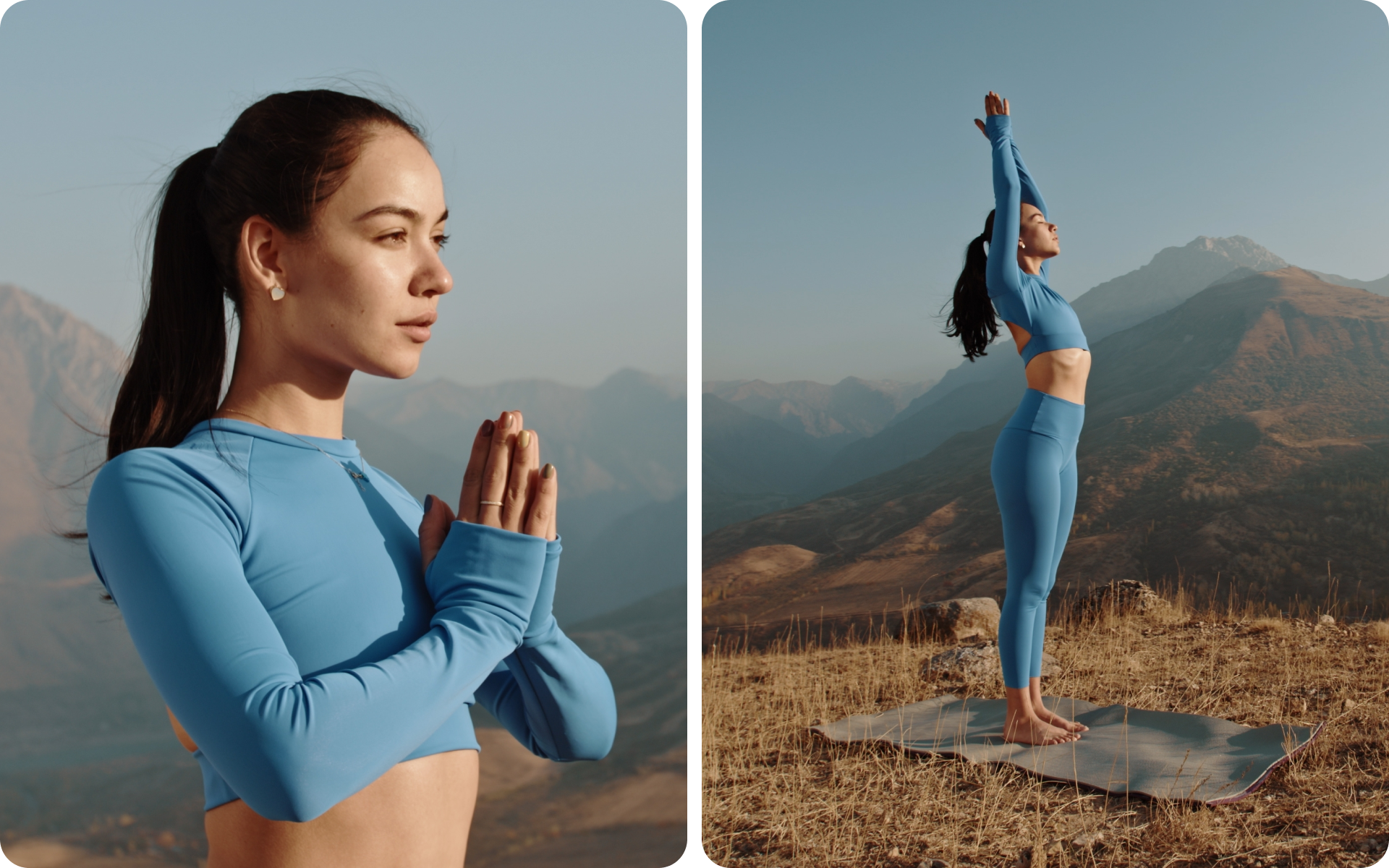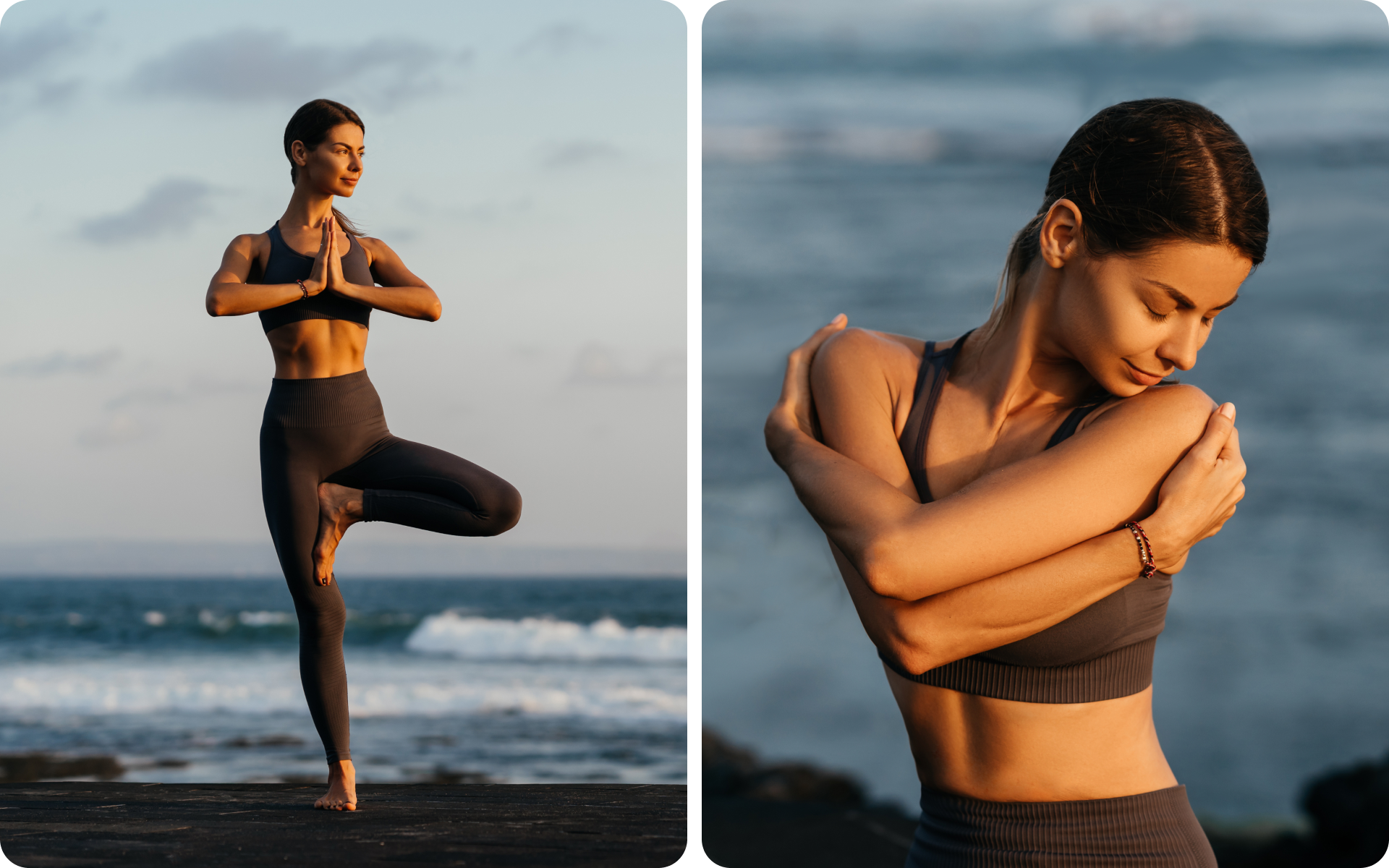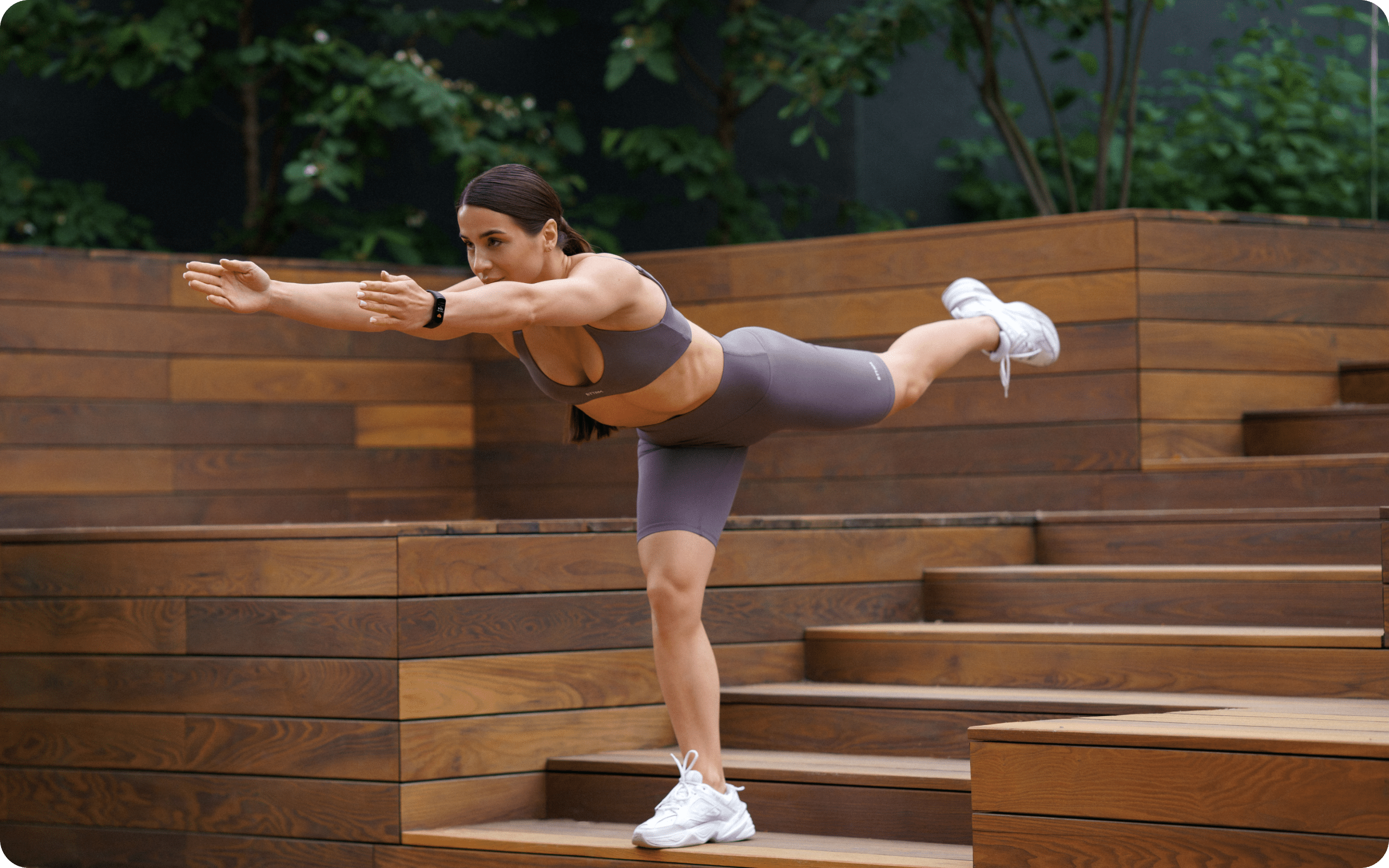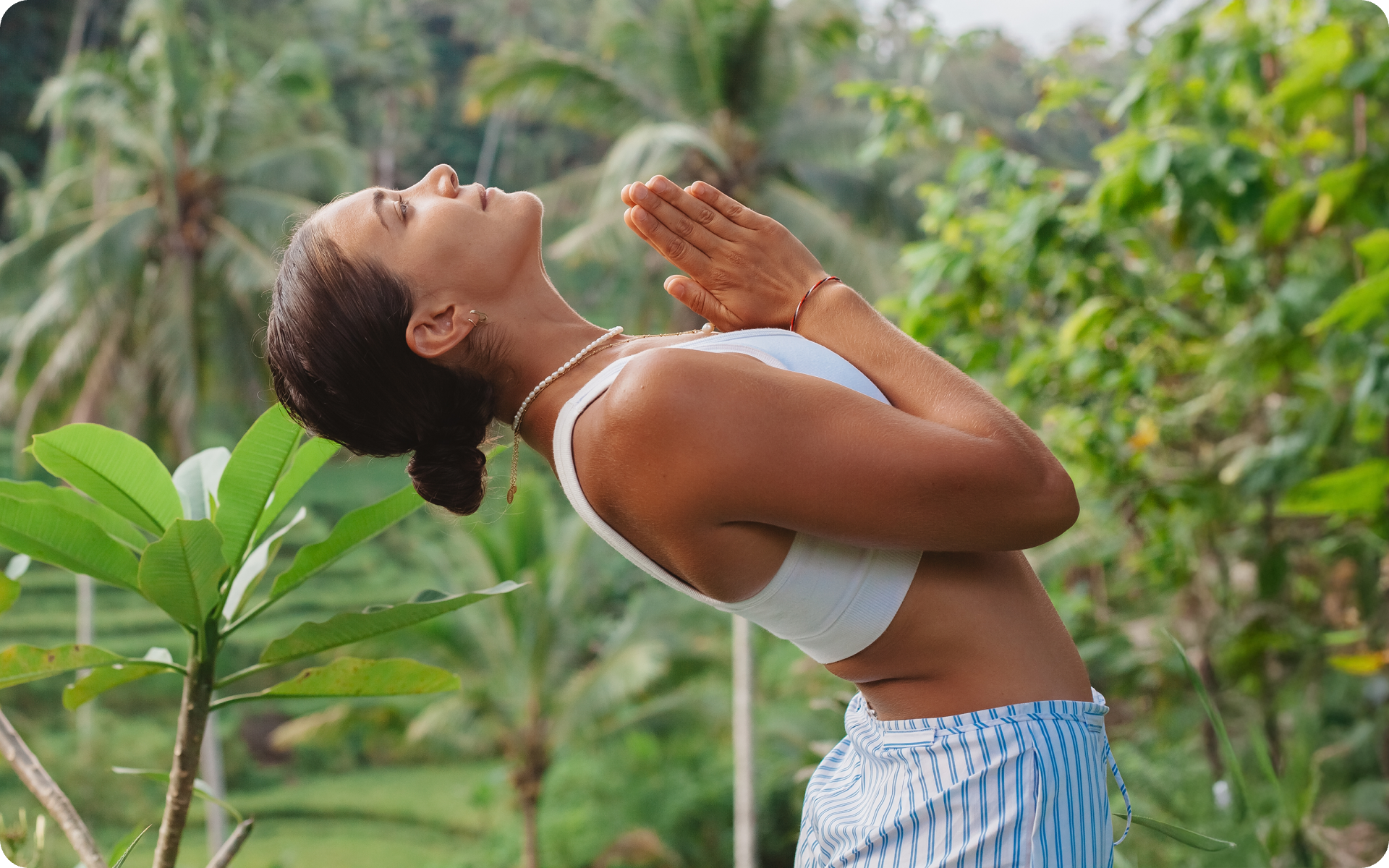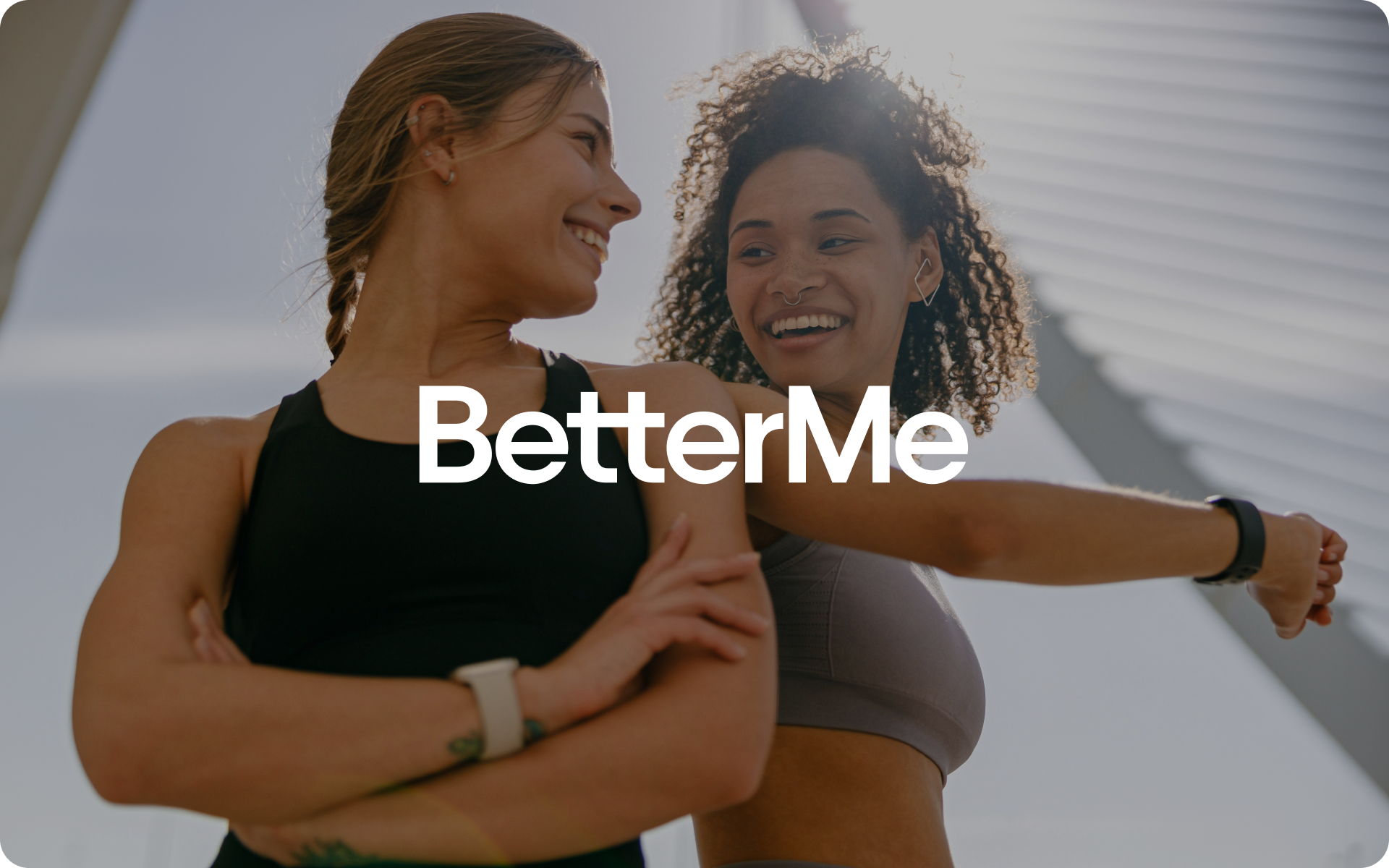When we think of balance and coordination exercises, many of us automatically assume such workouts are only for children, older adults, or disabled people who need to learn or relearn motor skills to help them navigate the world around them easily and avoid falls.
While there is truth in this, exercises for balance and coordination are important to everyone, regardless of age, health, or athletic prowess.
In todays’ article, we’re going to look further into the benefits of coordination exercises and outline some easy-to-do coordination exercises that can be done at home to help improve your hand-eye coordination, among other things.
What Is Coordination?
Before answering the question “what are some examples of coordination exercises?” what exactly is coordination?
According to Merriam Webster, coordination is the harmonious functioning of parts for effective results (2). In simpler terms, this is the use of two or more body parts at the same time to complete a task.
The most commonly known form of this harmonious function is hand-eye coordination, which can be seen in example activities such as typing on a computer, throwing and catching a ball, or playing video games.
What Are the Benefits of Doing Coordination Exercises?
All human beings start working on their coordination as babies through simple tasks such as trying to grab things, walking, or feeding themselves (15). However, once these things become ingrained into our subconscious to the point that we don’t have to think about them, we no longer actively work on coordination or balance.
Here are some reasons why you shouldn’t overlook balance and coordination exercises:
Can improve cognitive function
If you or someone around you has a hard time learning, thinking, reasoning, remembering, problem-solving, decision-making, or paying attention for extended periods of time, then coordination exercises may be the right therapy.
While small issues of cognitive decline can show up in anyone, according to the CDC, the issue is very common in many older adults and it can significantly impair their overall health and well-being.
If cognitive decline is not mitigated, it can make seniors unable to care for themselves or perform daily living activities and it could also impact their ability to effectively manage medication regimens. This can result in poor health and increase their risk of chronic diseases such as heart disease or diabetes (16).
Research has shown that coordination exercises for seniors can help improve their cognition, thereby improving their health and general well-being.
In an 8-week study published in the Clinical Interventions in Aging journal, researchers found that doing low-intensity coordination training helped improve cognitive functioning in older adults (6).
In a more recent study published in the MDPI journals, researchers found that engaging in aerobic exercise or balance and coordination exercises for adults had better results in improving the cognitive function and attention span of seniors (18).
The researchers suggested that rather than making seniors read as a way to try and improve their attention and cognitive function, it would be better to have them do a 30-minute session of older adult-friendly aerobic workouts or balance and coordination activities at home (18).
A review published in the Frontiers in Aging Neuroscience journal found that engaging in balance and coordination exercises can improve static and dynamic stability, which can reduce the risk of falling (19).
Another study published in the Psychology of Sport and Exercise found that participating in just 25 minutes of coordination exercises a day can help improve the attention span of adolescents aged 15 to 18 (8).
Yanking yourself back in shape has never been so easy with our game-changing fitness app! Start transforming your life with BetterMe !
Can improve sports performance
You may not think that it happens, but a lot of sports, particularly those that involve a ball, rely on coordination. To improve in sports such as tennis, baseball, volleyball, or hockey, hand-eye coordination exercises should be a part of every athlete’s training program.
A study published in 2010 revealed that tennis players who did these types of workouts noticed an improvement in their forehand and backhand tennis skills. At the same time, soccer players will find more benefits in doing foot-eye coordination exercises (17).
In another study published in the International Journal of Environmental Research and Public Health, researchers found that engaging in a 10-minute coordination training program every training day for 10 weeks can help increase the lower-body strength, power, and agility capacity of young non-professional soccer players (7).
In another study on soccer players aged 10 to 13 years old, researchers found that performing 30 minutes of coordination training three days a week for ten weeks can help significantly improve general skills such as dribbling, passing, shooting, ball bouncing, and volleying (9).
A systematic review in the Turkish Journal of Kinesiology in late 2023 concluded that coordination exercises are essential for gymnasts, athletes, sports climbers, and swimmers as they help improve their motor abilities, significantly impacting their athletic success (4).
It will make day-to-day tasks easier
We use coordination for all kinds of skills in our daily lives. From fine motor skills such as writing to more complicated gross motor skills such as walking, running, and carrying groceries, doing hand-eye coordination exercises will make sure you’re able to do these tasks and more with ease.
Improved posture, balance, and lower risk of falling
A comparative study published in 2001 in the Archives of Physical Medicine and Rehabilitation journal found that using tai chi as a coordination exercise helped improve posture in elderly people and lowered their risk of falling over (3).
A more recent study published in 2023 showed that such workouts improve static and dynamic stability and balance and lower the risk of falling in older adults. This reduces their risk of injuries and also reduces their physical limitations, anxiety, and loss of confidence (19).
Another study on 5-year-old children found that when they were introduced to coordination-based movement education, their balance motor capacities showed a positive improvement (20).
Balance and coordination exercises have also shown great results in the rehabilitation of stroke patients (10). This goes to show that regardless of age, fitness ability, and health and mobility status, such workouts can help improve balance and posture (11) and reduce the risk of falls which helps improve quality of life.
Building more muscle
This helps improve body confidence and burn more calories, which could lead to weight loss. Coordination exercises without equipment can help build muscle strength and this can help with the prevention or rehabilitation of musculoskeletal pain or injury in the neck, shoulder, or trunk muscles (13).
Increased energy levels
As with other workouts, coordination exercises will build your endurance, which makes it easier to perform daily tasks (13, 14). In addition, exercise delivers oxygen and nutrients to your tissues and helps your cardiovascular system work more efficiently – a stronger heart and lungs leads to more energy.
Improved agility and flexibility
You can move your body and muscles easily, faster, and more smoothly in whichever direction you choose. Chair yoga for seniors is a good exercise that can help increase agility and flexibility in older adults.
Research has shown that this practice can help improve muscular strength, flexibility, and psychomotor coordination in older adults, so having seniors engage in chair yoga sequences could be beneficial to their health and quality of life (21).
Happy hormones and improved mood
Physical activity is believed to help increase the production of your brain’s feel-good neurotransmitters, which are called endorphins. Endorphins are said to help relieve pain, reduce stress, and improve your sense of well-being.
Read more: Balance Exercises For Seniors: Simple Moves To Help Improve Balance And Coordination In Older Adults
What Are Some Good Coordination Activities? Exercises to Improve Coordination
If you’re looking for the answer to the question “how do you train balance and coordination?” here are some exercises that will help improve your coordination and motor skills:
Jumping Rope
Not only is this a great cardio workout that helps burn a large number of calories in a short time and also improves the health of your heart and lungs, it also helps improve the coordination between your eyes, feet, and hands.
Tossing a Balloon
This is a game that many of us played when we were younger. As a grown-up, you can use this fun childhood game to improve your coordination, especially hand-eye coordination. Pro tip: make sure to keep changing the angles and speeds to keep it unpredictable.
Walking Lunges
Used mostly as a lower-body exercise for toned thighs and glutes, walking lunges are also a fantastic exercise to improve your coordination, balance, and stability.
Single Leg Deadlift
This can be done with either your body weight, kettlebells, or dumbbells. Standing on one leg with the other pushed behind you as you lift weights works on both coordination (having to carry the weights up and down as you bend over) and balance (remaining steady on one leg).
Juggling
This is perhaps one of the best hand-eye coordination exercises there is. Juggling multiple balls at once forces you to find pacing and coordination between your eyes, hands, and the balls. It also makes for a great party trick.
Ball Tossing
A faster version of balloon tossing. Using a small ball, toss it back and forth between yourself and a partner. If you’re alone, toss the ball against a wall and try to catch it as it bounces back to you.
Dart Throwing
Played mostly in pubs, this is a great target game that improves hand-eye coordination through aiming and throwing.
Dribbling
If you’ve ever stepped foot on a basketball court, then you know all about dribbling. Like basic ball or balloon tossing, this is a great example of hand-eye exercises. Dribble at different angles and speeds to challenge yourself. This activity can also be used as a balance exercise by passing the ball in between your legs – just be careful you don’t fall over or hit your face with the ball
Yoga
This is the perfect balance and coordination exercise that can be done by anyone, regardless of age or level of physical fitness, as it can be both a low- or high-impact workout. Holding even the simplest poses requires balance and coordination.
Tai Chi
As previously mentioned, this low-impact workout is great for improving balance in the elderly. It also works well for younger people.
Pilates
As with yoga and tai chi, Pilates calls for a lot of controlled movement, not only with your body, but also your breaths.
Indoor Walking
If you think about it, walking requires a lot of coordination – way more than many people give it credit for. Walking requires whole-body coordination using hundreds of muscles, bones, and joints in the lower and upper extremities working together to deliver smooth movements (5, 1).
If you wish to cinch your waist, tone up your bat wings, blast away the muffin top – our fitness app was created to cater to all your needs! BetterMe won’t give excess weight a chance!
What Are the Motor Skills in Exercise?
Your motor skills are the ability of the nervous system to control motion performance (12). When exercising or engaging in sports, the most important skills you need include:
- Balance – The ability to stabilize your body, whether standing still or maintaining motion
- Coordination – The use of two or more body parts at the same time to complete a task
- Agility – The capacity to change course, controlling the direction and position of your body while maintaining your momentum.
- Speed – The ability to move your body swiftly
- Power – A combination of speed and muscle strength
- Reaction time – The capacity/ability to interpret and then react to expected and unexpected events that are happening around you
FAQs
Why is coordination important in fitness?
As seen in the benefits section, improving your coordination can help improve your balance, flexibility, posture, muscle strength, and cognition, all factors that play a huge part in your daily life, enhancing your fitness and sports abilities, and reducing your risk of injury.
Does working out improve coordination?
Yes, it does. Different kinds of workouts, not just specifically coordination exercises, can help improve this skill. Simple everyday exercises such as running, marching, and squatting can all help with this.
Can you fix being uncoordinated?
Yes, you can. Contrary to popular belief, coordination is not an innate skill – we’re not born with all the coordination we will ever have in life. Coordination is a learned skill that we start learning/picking up as infants and fine-tune throughout our lives. If you feel as if you’re terribly uncoordinated, start incorporating simple coordination exercises in your daily life, and with time, you’ll see some incredible improvements.
The Bottom Line
Coordination exercises should not be ignored. While their benefits may not be as easily seen as something such as cardio or lifting weights, they’re still essential for every workout routine. Not only does doing them actually help your performance of your other beloved/preferred workouts, their benefits exceed the four walls of the gym and spill over into real life, which makes everyday activities so much easier.
DISCLAIMER:
This article is intended for general informational purposes only and does not serve to address individual circumstances. It is not a substitute for professional advice or help and should not be relied on for making any kind of decision-making. Any action taken as a direct or indirect result of the information in this article is entirely at your own risk and is your sole responsibility.
BetterMe, its content staff, and its medical advisors accept no responsibility for inaccuracies, errors, misstatements, inconsistencies, or omissions and specifically disclaim any liability, loss or risk, personal, professional or otherwise, which may be incurred as a consequence, directly or indirectly, of the use and/or application of any content.
You should always seek the advice of your physician or other qualified health provider with any questions you may have regarding a medical condition or your specific situation. Never disregard professional medical advice or delay seeking it because of BetterMe content. If you suspect or think you may have a medical emergency, call your doctor.
SOURCES
- A review on the coordinative structure of human walking and the application of principal component analysis (2013, ncbi.nlm.nih.gov)
- Coordination (2024, merriam-webster.com)
- Coordination exercise and postural stability in elderly people: Effect of Tai Chi Chuan (2001, archives-pmr.org)
- Coordination in some of the basic individual sports: a systematic review (2023, researchgate.net)
- Coordination of the upper and lower extremities during walking in children with cerebral palsy (2021, sciencedirect.com)
- Effectiveness of coordination exercise in improving cognitive function in older adults: a prospective study (2011, ncbi.nlm.nih.gov)
- Effects of a 10-Week Combined Coordination and Agility Training Program on Young Male Soccer Players (2021, ncbi.nlm.nih.gov)
- Effects of acute endurance, strength, and coordination exercise interventions on attention in adolescents: A randomized controlled study (2023, sciencedirect.com)
- Effects of coordination training on the technical development in 10-/13-year-old football players (2021, pubmed.ncbi.nlm.nih.gov)
- Impact Of Balance Training and Coordination Exercises in Post Hemiplegic Stroke Patients: Balance Training and Coordination Exercises for Post Hemiplegic Stroke (2022, researchgate.net)
- Impact of physical activity on postural stability and coordination in children with posterior fossa tumor: randomized control phase III trial (2022, link.springer.com)
- Improving Motor Skills in Early Childhood through Goal-Oriented Play Activity (2021, ncbi.nlm.nih.gov)
- Muscle activity during functional coordination training: implications for strength gain and rehabilitation (2010, pubmed.ncbi.nlm.nih.gov)
- Practice effects on coordination and control, metabolic energy expenditure, and muscle activation (2002, sciencedirect.com)
- Real-Time Assembly of Coordination Patterns in Human Infants (2020, pubmed.ncbi.nlm.nih.gov)
- Subjective Cognitive Decline — A Public Health Issue (2019, cdc.gov)
- The effect of a coordination training program on the development of tennis service technique (2010, researchgate.net)
- The Effect of a Single Session of Balance and Coordination Training on Cognitive Function in Older Adults (2023, mdpi.com)
- The Effect of Balance and Coordination Exercises on Quality of Life in Older Adults: A Mini-Review (2019, ncbi.nlm.nih.gov)
- The impact of coordination-based movement education model on balance development of 5-year-old children (2023, frontiersin.org)
- Yoga Practice Improves Physical Fitness and Psychomotor Coordination in Older Adults (2020, researchgate.net)
